Python 구현 algorithm
상하좌우 문제
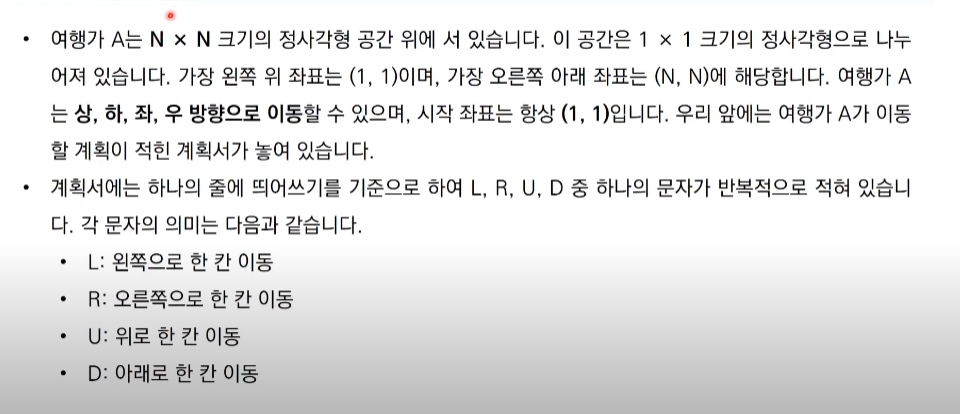
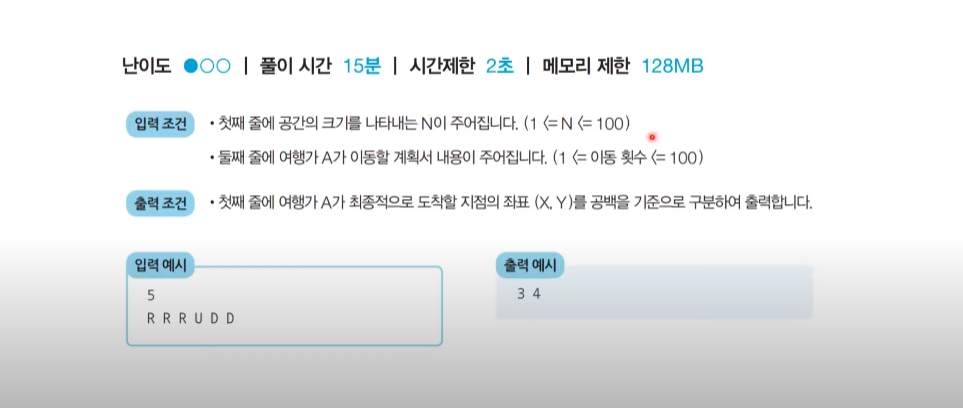
# N 입력받기
n = int(input())
x, y= 1, 1
plans = input().split()
# L,R,U,D에 따른 이동 방향
dx=[0,0,-1,1]
dy=[-1,1,0,0]
move_types=['L','R','U','D']
# 이동 계획을 하나씩 확인하기
for plan in plans:
#이동 후 좌표 구하기
for i in range(len(move_types)):
if plan == move_types[i]:
nx = x + dx[i]
ny = y + dy[i]
# 공간을 벗어나는 경우 무시
if nx <1 or ny <1 or nx>n or ny>n:
continue
# 이동 수행
x, y = nx, ny
print(x, y)
시각 문제 설명

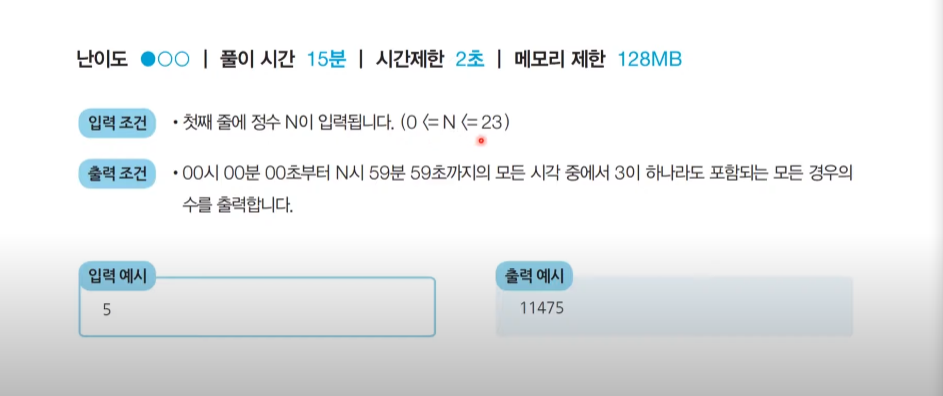
시간과 분, 초를 모두 반복문으로 돌면서 문자열로 바꿔 '3'이 들어있으면 count를 올리는 식으로 해결
# H 입력받기
h = int(input())
count=0
for i in range(h+1):
for j in range(60):
for k in range(60):
# 매 시각 안에 '3'이 포함되어 있다면 카운트 증가
if '3' in str(i)+str(j)+str(k):
count += 1
print(count)
왕실의 나이트
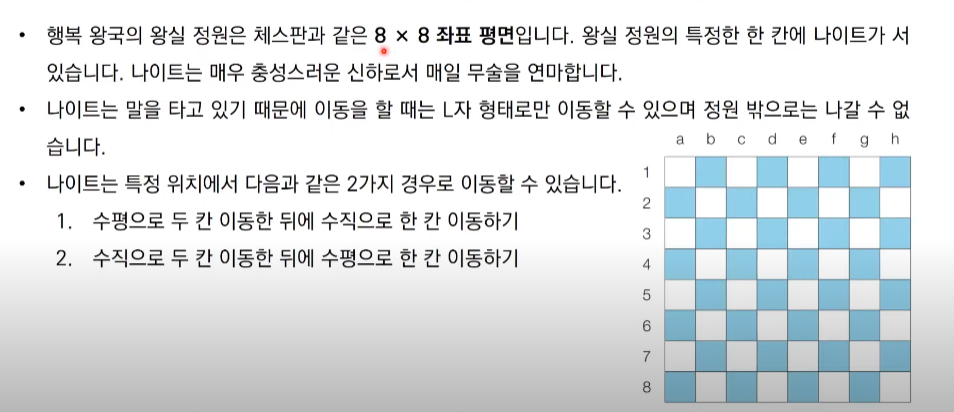
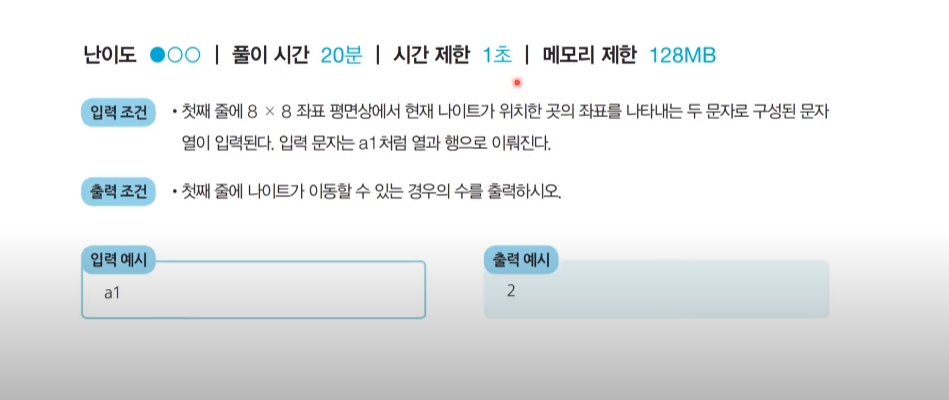
방향벡터를 나타내는 함수를 만들고 이동을 시켰을때 특정 범위를 벗어나지않으면 카운트를 늘리는 식으로 해결
position = input()
night_row = int(position[1])
night_column = int(ord(position[0]))-int(ord('a'))+1
# 나이트가 이동할 수 있는 8가지의 방향
steps = [
(-2,-1),
(-1,-2),
(1,-2),
(2,-1),
(2,1),
(1,2),
(-1,2),
(-2,1)
]
#8가지 방향에 대하여 각 위치로 이동이 가능한지
result= 0
for step in steps:
# 이동하고자 하는 위치
next_row = night_row + step[0]
next_column = night_column + step[1]
if next_row >= 1 and next_row <= 8 and next_column >=1 and next_column <=8:
result += 1
print(result)
print(night_row,night_column)
문자열 재정렬
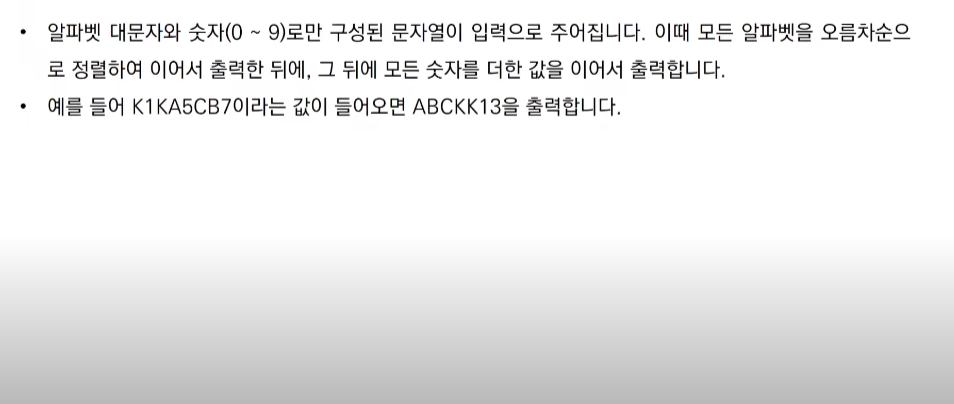
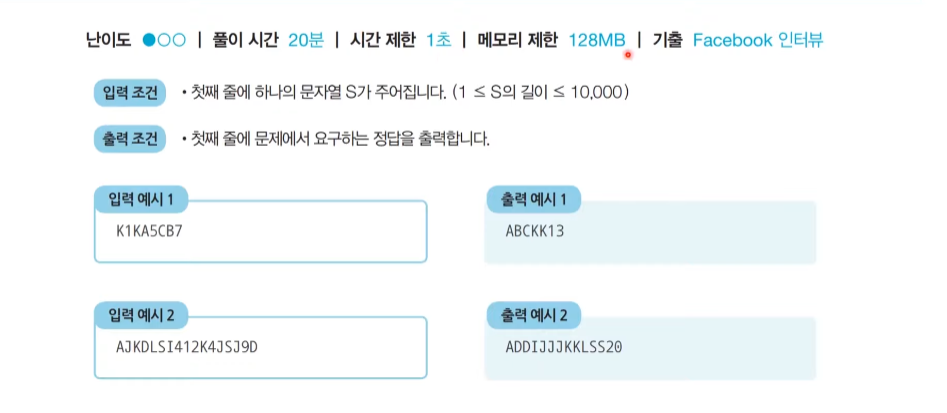
알파벳 리스트를 따로만들고 숫자를 더할 공간도 따로만들어서 둘을 마지막에 합친다.
string_data = input()
result = []
value = 0
# 문자를 하나씩 확인
for i in string_data:
if i.isalpha():
result.append(i)
#숫자 따로 더하기
else :
value += int(i)
# 알파벳 오름차순 정렬
result.sort()
# 숫자가 하나라도 존재하는 경우 가장뒤에 삽입
if value != 0:
result.append(str(value))
# 최종 결과 출력(리스트를 문자열로 변환하여 출력)
print(''.join(result))









